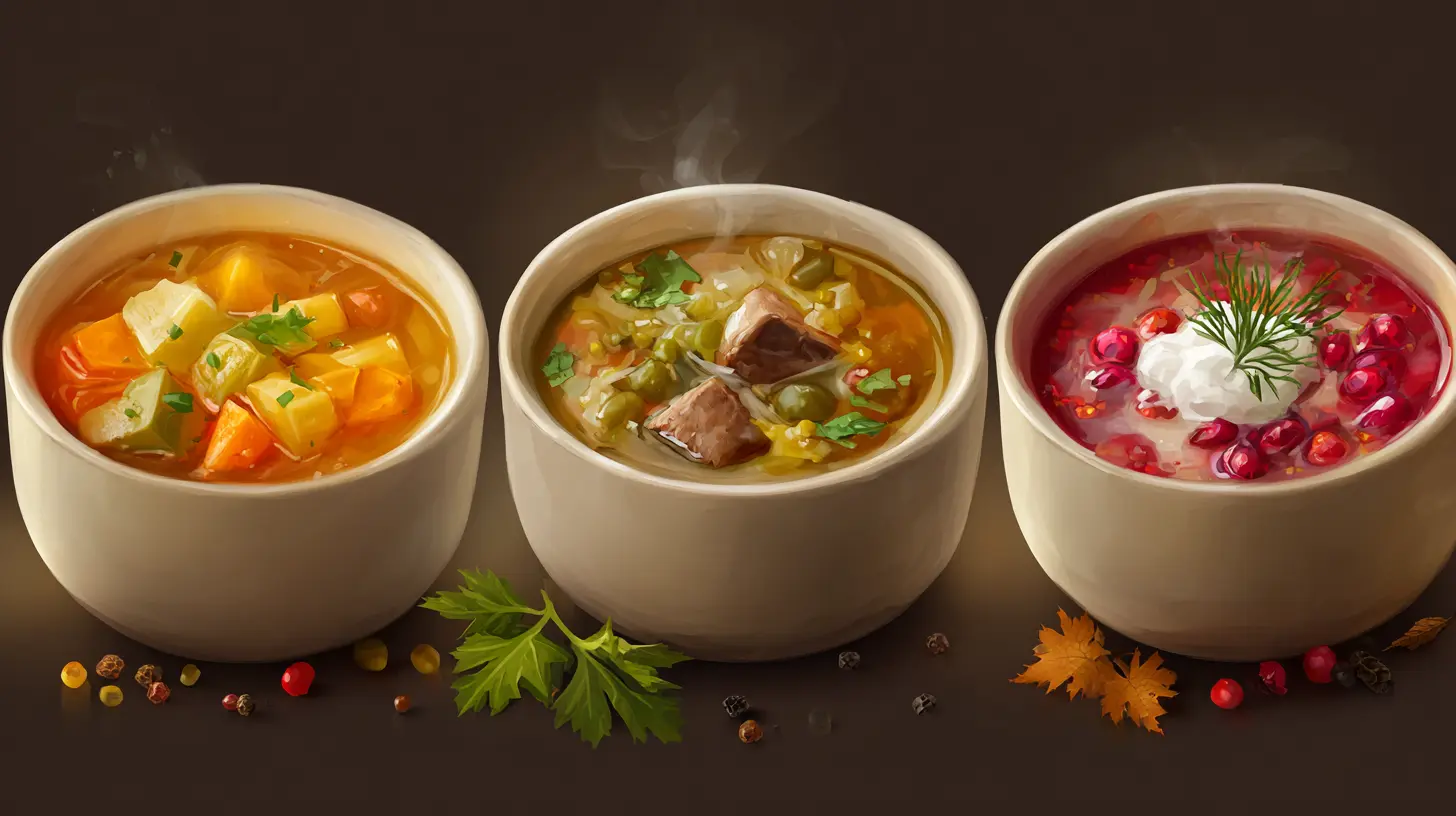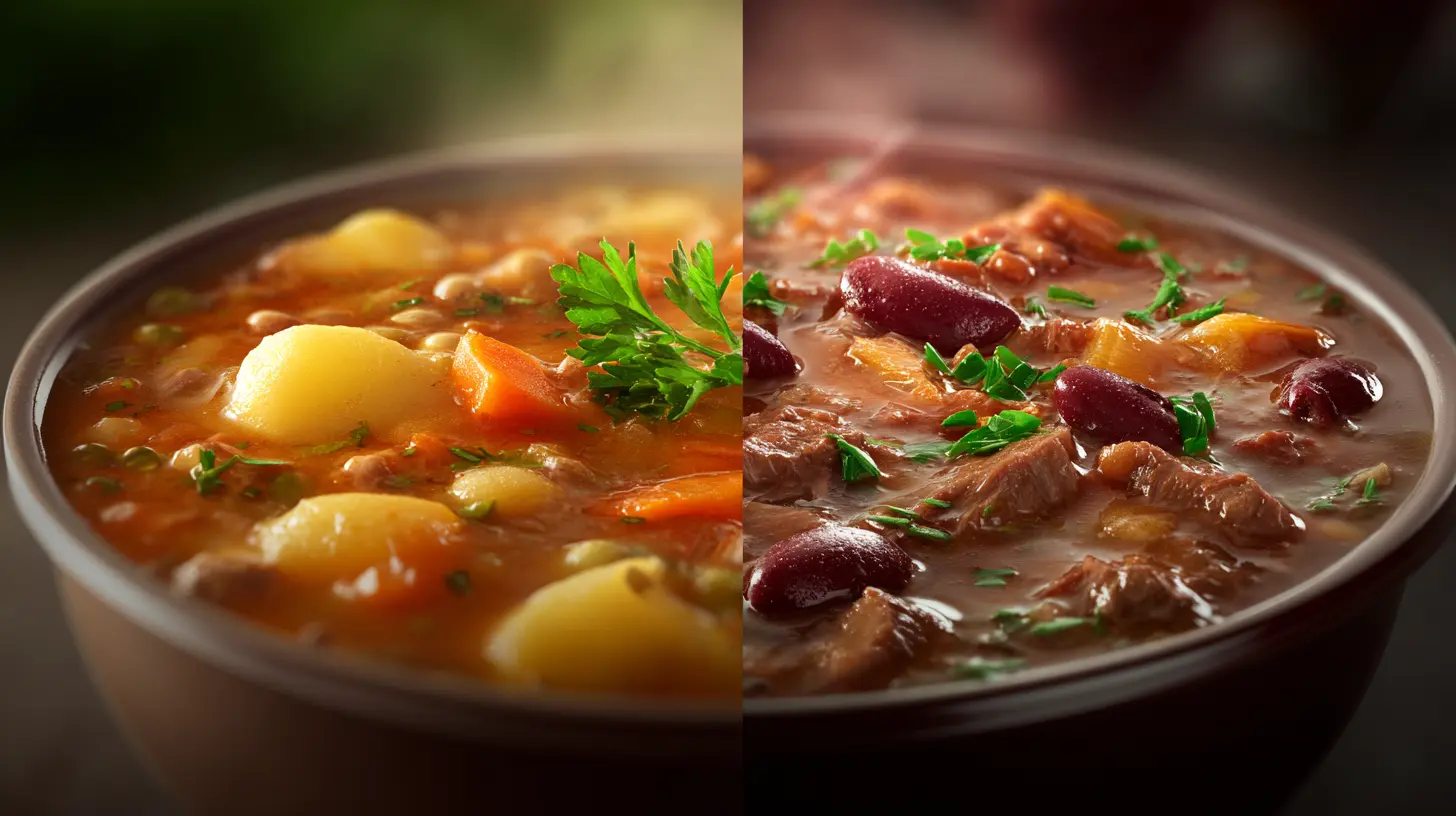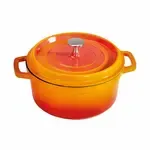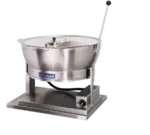
Soup vs Stew vs Chowder: What’s the Difference?
- What Is Soup?
- What Is Stew?
- What Is a Chowder?
- Chowder vs Soup: What’s the Difference?
- Stew vs Soup vs Chowder: A Culinary Comparison
- Equipment Required to Make Soups, Stews, and Chowders
- The Cultural Evolution of Soups, Stews, and Chowders
- Stew Types Around the World
- Is Stew a Soup?
- Which One Should You Choose?
- Final Thoughts
When it comes to comfort food, few dishes warm the soul like a steaming bowl of soup, a hearty stew, or a creamy chowder. These beloved classics share a similar foundation — a combination of ingredients simmered in liquid — yet their differences are what make each unique. Understanding the difference between soup and stew, or how a chowder vs soup compares, can elevate your cooking and help you choose the right dish for every occasion.
Let’s explore soup vs stew vs chowder, breaking down what sets them apart, how they’re prepared, and even what equipment you’ll need to craft each one perfectly.
What Is Soup?
At its core, soup is a liquid-based dish that can be light and brothy or thick and creamy. The base usually starts with water, stock, or broth, combined with vegetables, meat, or seafood. Soups are cooked at a gentle simmer and often served as a starter, side, or light meal.
There are many types of soup, including:
- Broth-based soups (like chicken noodle or miso)
- Cream-based soups (like cream of mushroom or tomato bisque)
- Pureed soups (like butternut squash or lentil soup)
When comparing soup vs stew, soup generally has a higher liquid content and smaller, softer ingredients. It’s designed to be sipped or eaten with a spoon, providing warmth and nourishment without being too heavy.
What Is Stew?
To define stew, imagine a thicker, heartier cousin of soup. Stew consists of larger chunks of meat, potatoes, and vegetables simmered slowly in a small amount of liquid until everything becomes tender and infused with rich flavor.
Stews are typically cooked for a longer period, allowing the ingredients to break down and create a naturally thick consistency. Instead of broth being the main component, the focus is on the solids — with just enough liquid to coat and enhance them.
Examples of popular stew types include:
- Beef stew – with potatoes, carrots, and red wine broth
- Irish stew – lamb-based with root vegetables
- Chicken stew – lighter, often with herbs and cream
- Seafood stew – Mediterranean-style, featuring shrimp or fish in tomato broth
So, is stew a soup? Technically, stew belongs to the same culinary family, but it’s considered a separate dish because of its thickness, texture, and cooking method.
What’s the Difference Between Soup and Stew?
When comparing soup vs stew, the difference between soup and stew lies primarily in liquid content, cooking time, and texture.
| Feature | Soup | Stew |
|---|---|---|
| Liquid Ratio | High – ingredients float in broth | Low – liquid just covers the ingredients |
| Cooking Time | Short to moderate | Long and slow |
| Texture | Thin or smooth | Thick and chunky |
| Serving | Often as a starter | Usually a main course |
In other words, the answer to what’s the difference between soup and stew comes down to density: soups are sippable, while stews are spoonable meals.
What Is a Chowder?
A chowder is another member of the same comforting family, but it deserves its own spotlight. So, what is a chowder? Traditionally, it’s a thick, creamy soup loaded with seafood, potatoes, and vegetables. The name comes from the French word chaudière, meaning “cauldron,” referring to the large pots fishermen used to prepare these hearty dishes.
Common chowder varieties include:
- Clam chowder – New England-style with cream and potatoes
- Corn chowder – sweet and hearty, with milk or cream base
- Seafood chowder – a rich blend of fish, shrimp, and shellfish
When discussing stew vs soup vs chowder, chowder fits somewhere between soup and stew: thicker than soup but creamier than stew, with a distinctive velvety texture.
Chowder vs Soup: What’s the Difference?

The difference between chowder and soup is all about creaminess and body. While soup can be clear or creamy, chowders are always thick and rich, usually incorporating milk, cream, or roux (a flour and butter mixture) for their signature texture.
If you’re wondering what’s the difference between chowder and soup, remember this: chowder coats the spoon, while soup runs off it.
Stew vs Soup vs Chowder: A Culinary Comparison
Let’s summarize the stew vs soup vs chowder debate:
- Soup is mostly liquid, quick to make, and can range from light to creamy.
- Stew is chunky, cooked low and slow, and relies on meat and vegetables for thickness.
- Chowder is creamy and indulgent, blending the comfort of soup with the richness of dairy-based ingredients.
Each has a unique role in cooking — soups warm you, stews fill you, and chowders comfort you.
Equipment Required to Make Soups, Stews, and Chowders
Whether you’re cooking at home or running a professional kitchen, the right equipment makes a huge difference in flavor and consistency.
For soups, you’ll need:
- A stock pot or soup kettle for simmering large batches
- Immersion blender or blender for pureed soups
- Ladles and soup warmers for serving and holding temperature
For stews, opt for:
- A Dutch oven or braising pan to retain heat and moisture
- Slow cooker or tilting skillet for long, even cooking
- Portion control ladles for serving consistent amounts
For chowders, choose:
- A sauce pot or steam-jacketed kettle for controlled simmering
- Whisks for stirring roux and preventing scorching
- Hot holding cabinets to keep batches warm without curdling the cream
Commercial kitchens often rely on heavy-duty stainless steel cookware, induction ranges, and soup stations to keep these dishes hot during service. Investing in quality equipment ensures better temperature control and consistent results for every bowl served.
The Cultural Evolution of Soups, Stews, and Chowders
Throughout history, soups, stews, and chowders have evolved from humble beginnings into globally celebrated comfort foods.
- Soup traces back to ancient civilizations, where boiling meat and grains in water was one of the first forms of cooking.
- Stew likely originated from the need to tenderize tougher cuts of meat over long, slow heat.
- Chowder has maritime roots — coastal communities from France to New England made hearty, creamy seafood stews to feed hungry fishermen.
Each region has adapted these dishes to local tastes and ingredients, resulting in countless variations across cultures.
Stew Types Around the World
Exploring stew types reveals just how universal this dish is:
- Boeuf Bourguignon (France): Beef braised in red wine with onions and mushrooms.
- Goulash (Hungary): Paprika-spiced beef stew with root vegetables.
- Cocido (Spain): A layered meat and chickpea stew.
- Chili (U.S.): A thick tomato-based stew with beans, meat, and spices.
- Tagine (Morocco): Slow-cooked stew with meat, fruits, and spices in a clay pot.
No matter where it comes from, the essence of stew is patience — allowing ingredients to meld over time into a dish bursting with depth and comfort.
Is Stew a Soup?
It’s a common question: is stew a soup? While both belong to the same family of liquid-based dishes, stew is typically considered separate due to its thicker, heartier consistency. If soup is the appetizer, stew is the meal.
Which One Should You Choose?
When deciding between soup vs stew, consider the occasion:
- Want something light before dinner? Go for soup.
- Craving a one-pot meal? Choose stew.
- Want a creamy indulgence with seafood or corn? Chowder’s your best bet.
Understanding what’s the difference between soup and stew or what’s the difference between chowder and soup helps you not only cook better but also appreciate the culinary craftsmanship behind every spoonful.
Final Thoughts
The debate of stew vs soup vs chowder comes down to more than just ingredients — it’s about texture, preparation, and purpose.
- Soups comfort with simplicity.
- Stews satisfy with substance.
- Chowders indulge with creaminess.
Each plays a role in culinary tradition, from the homestyle chicken soup that cures a cold to the slow-simmered beef stew that anchors a winter meal. And with the right commercial kitchen equipment, chefs can perfect them all — delivering flavor, consistency, and warmth in every bowl.





